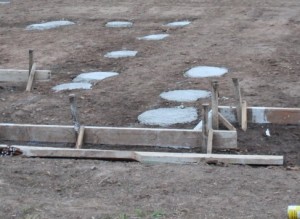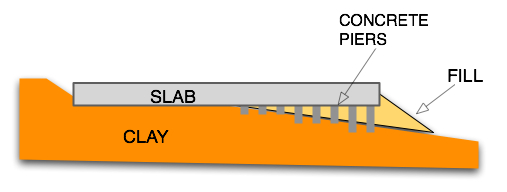Building On Fill – Concrete Piers
Its not unusual for the Site Investigation Report for your new house to reveal loose fill materials above a more stable clay or rock.
It might also reveal the soil is in poor condition.
To deal with the problem of building on poor ground concrete piers are a commonly used solution.
These are basically a hole that is excavated through the poor material and into the top of good ground. The hole is then backfilled with concrete to the level of the underside of the slab.
When they are finished you have a flat site with piers visible as concrete ‘pads’ (like the photo below), ready for the slab to be constructed
You don’t have to have Concrete piers over the whole site, just the parts where there will be fill, or weaker soil between the bottom of the slab and the stronger soils.
The following diagram shows a typical slab on a cut and fill site with piers excavated through the fill to the good ground.
See the following link for an alternative to Concrete Piers: Screw Piles.
The Slab over the piers is likely to be either a Waffle Pod Raft or a Conventional Raft Slab
When the site investigation indicates fill the builder will often put in a Provisional Sum for the estimated metresdepth of concrete piers.
At the time of construction they will drill down to good ground in the fill areas and calculate the actual metres you will need to pay for.
If your whole house is on ‘Controlled Fill‘ You may not need to use concrete piers.
Lots more information in the anewhouse Guide to Buying a Block for only $4
See Ground Conditions for more about your new house foundations.

